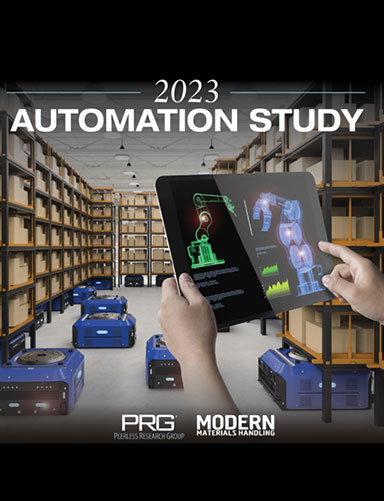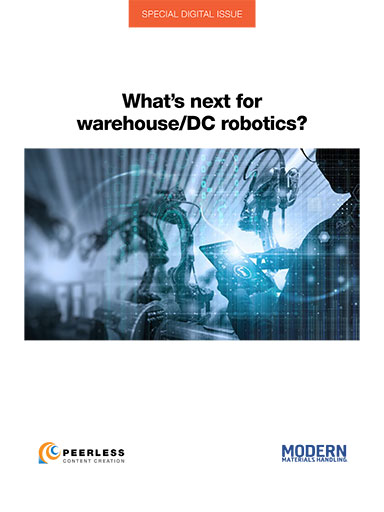How the Internet of Things Is Improving Transportation and Logistics

From passenger security and fleet management to assembly processes and delivery times, the transportation and logistics industry needs solutions that move its people and cargo safely and efficiently.
Whether by air, ground or sea, transportation and logistics are essential components to many enterprises’ productivity, and access to real-time data is critical.
Many businesses have already discovered the advantages of using mobile technologies; however, the unpredictable nature of fuel costs, rising labor rates, increased traffic and a changing regulatory environment, continue to make operations challenging.
What’s more, inefficiencies caused by a lack of visibility create considerable costs.
As industry regulations force transportation and logistics organizations to do more with less, profitability is threatened. However, with visibility into personnel, equipment and transactions, enterprises can better support peak operations in real time - improving operational efficiency and performance.
With the advent of today’s mobile technologies and the Internet of Things (IoT), enterprises can accelerate productivity, profitability and operations with solutions designed specifically for their processes. With the right IoT solution in place, enterprises can connect all devices across a centralized cloud network, and capture and share their mission-critical data, allowing them to gain real-time visibility of their operations.
This actionable insight is what provides organizations the Enterprise Asset Intelligence they need to make improvements. This enhanced business knowledge can be gained through a set of enabling technologies in the areas of asset management, cloud, mobile and Big Data.
By leveraging Enterprise Asset Intelligence, transportation and logistics can dramatically improve the following areas:
I. End-to-End Visibility
Transportation and logistics businesses around the globe are focused on maximizing supply chain efficiency in order to sustain profitability and viability.
However, to reach this level of performance, they need to make end-to-end improvements. Complete visibility facilitates more effective, timely decisions and reduces delays through quicker detection of issues.
Mobile devices, such as radio frequency identification (RFID), barcode scanners and mobile computers, have become a major influence in supply chain visibility and operations. Many transportation and logistics companies using RFID today are reaching nearly 100 percent shipping and receiving accuracy, 99.5 percent inventory accuracy, 30 percent faster order processing and 30 percent reduction in labor costs.
Mobile technologies provide businesses line of sight into equipment, inventory and business processes. This asset intelligence allows organizations to increase their efficiency by providing them real-time data across their entire supply chain.
Though these types of solutions have already helped transportation and logistics businesses make improvements over the years, leveraging them with enabling technologies like the IoT can deliver even more asset intelligence, leading to more informed decisions.
II. Warehouse and Yard Management
The warehouse and/or yard are at the core of transportation and logistics businesses. Their efficiency directly impacts the cost of doing business and the ability to compete. With IoT-enabled mobile devices designed to track inventory data, equipment and vehicles, enterprises can give their physical assets a digital voice.
By converting the physical to digital, transportation and logistics warehouses can capture and share their mission-critical data across the cloud, ensuring they have the right products in the right place at the right time.
Yard personnel are frequently moving around on foot or in vehicles, manually conducting their routine tasks. This process is time intensive and prone to error which causes a number of visibility-related problems including redundant trailer moves, yard gate congestion, product shrinkage, wasted fuel and lost time. To address these issues, organizations across the supply chain implement RFID systems that automate asset tracking and location.
By reducing human intervention and enabling more machine-to-machine information sharing, enterprises can greatly increase efficiency and accuracy.
Warehouse Yard Management Papers
III. Fleet Management
When it comes to transportation and logistics, fleet management plays a critical role in managing maintenance schedules, everyday vehicle usage and service routes. In order to maximize productivity and operational efficiency, fleet downtime must be minimized. With mobile scanners, computers and RFID systems alone, enterprises can gain visibility into their assets and better streamline operations to keep their fleet moving.
By replacing manual and hard-copy work orders with mobile devices, technicians save time and increase data accuracy. Furthermore, with realtime, accurate insight into maintenance history, parts availability and inventory records, technicians can relay information back to their central database.
By leveraging connected, mobile devices, enterprises can capture, share and manage data around their moving assets across the enterprise. Connectivity also enables enterprises to communicate with their technicians (drivers) anytime, anywhere, allowing them to be proactive with in-field repairs, maintenance, etc. With real-time updates on certain conditions such as bad weather or traffic, fleet technicians can better respond and/or prepare.
For field technicians, real-time visibility into driver and vehicle performance is critical. This visibility can be used to increase the safety of technicians, reduce damaged inventory and decrease insurance-related costs all of which are critical to an enterprise’s bottom line. Additionally, with real-time insight, technicians and drivers can respond to customer service inquiries in a timely manner. This helps personnel know when and where to allocate their time - improving the organization’s overall performance and customer service.
Furthermore, with the ability to securely monitor their equipment and environment in real time, field service technicians can take action before problems arise. With the IoT, companies can gain intelligence remotely around their assets in the field, allowing them to facilitate needbased maintenance and eliminating unnecessary and/or reactive responses.
Advances in mobile technology and the IoT are dramatically improving the way transportation and logistics businesses operate. The Enterprise Asset Intelligence delivered through these solutions is what enables organizations to pinpoint inefficiencies in real time, improving throughput and helping them build progressive plans to move toward innovation.
Image: Transmedia Newswire
Related: How the Internet of Things is Transforming Manufacturing Today

Article Topics
Zebra Technologies News & Resources
Data Capture: Bar coding’s new companions Zebra Technologies introduces wearable computers Data Capture: Bar coding’s new friends Retail distribution closes in on the customer Enhance Your 3PL Operations in 2024 with the Latest Technology Solutions Automatic data capture (ADC): Accelerating the process Van Meter: Saving space while increasing throughput More Zebra TechnologiesLatest in Transportation
Talking Supply Chain: Doomsday never arrives for Baltimore bridge collapse impacts Amazon Logistics’ Growth Shakes Up Shipping Industry in 2023 Nissan Channels Tesla With Its Latest Manufacturing Process Why are Diesel Prices Climbing Back Over $4 a Gallon? Luxury Car Brands in Limbo After Chinese Company Violates Labor Laws The Three Biggest Challenges Facing Shippers and Carriers in 2024 Supply Chain Stability Index: “Tremendous Improvement” in 2023 More Transportation













